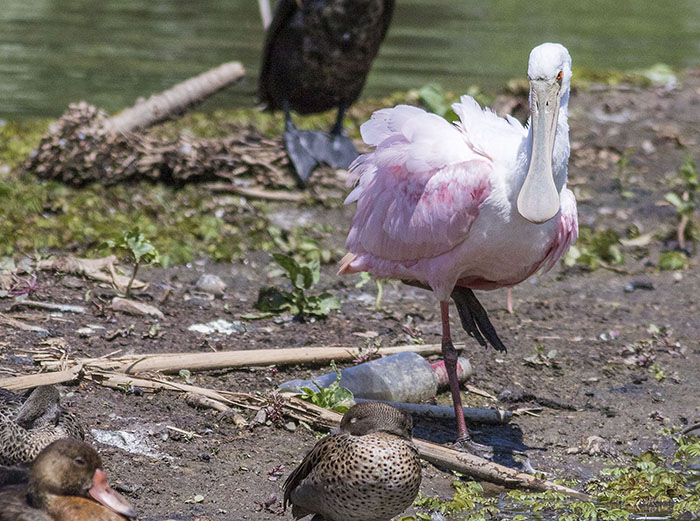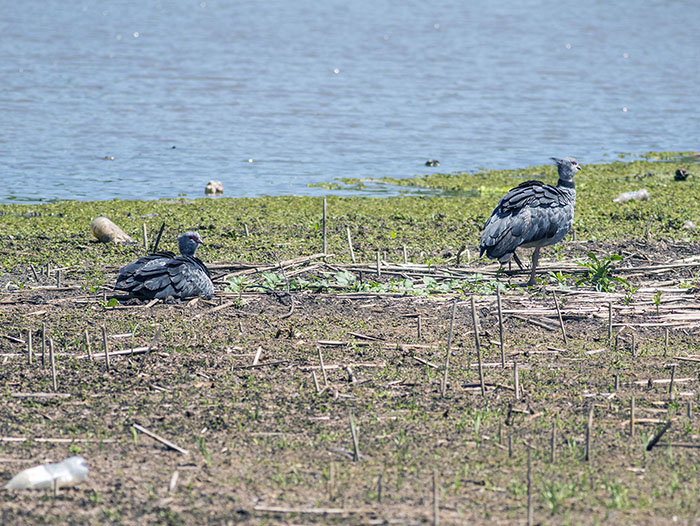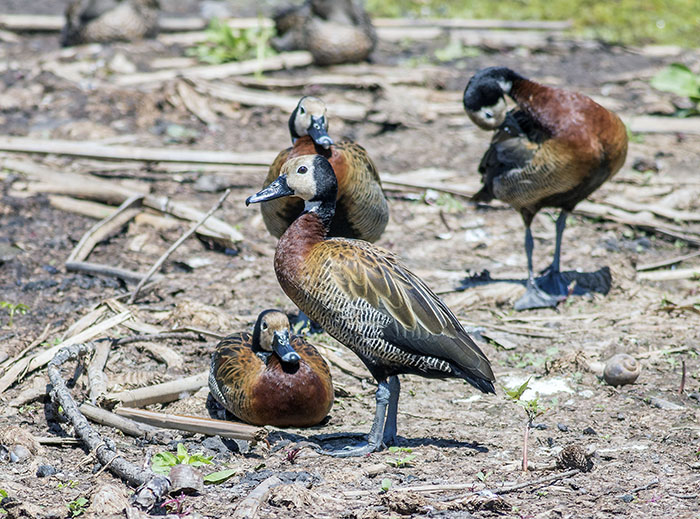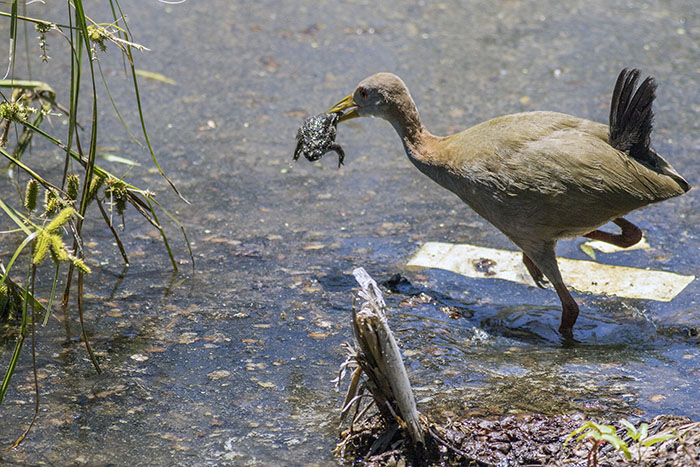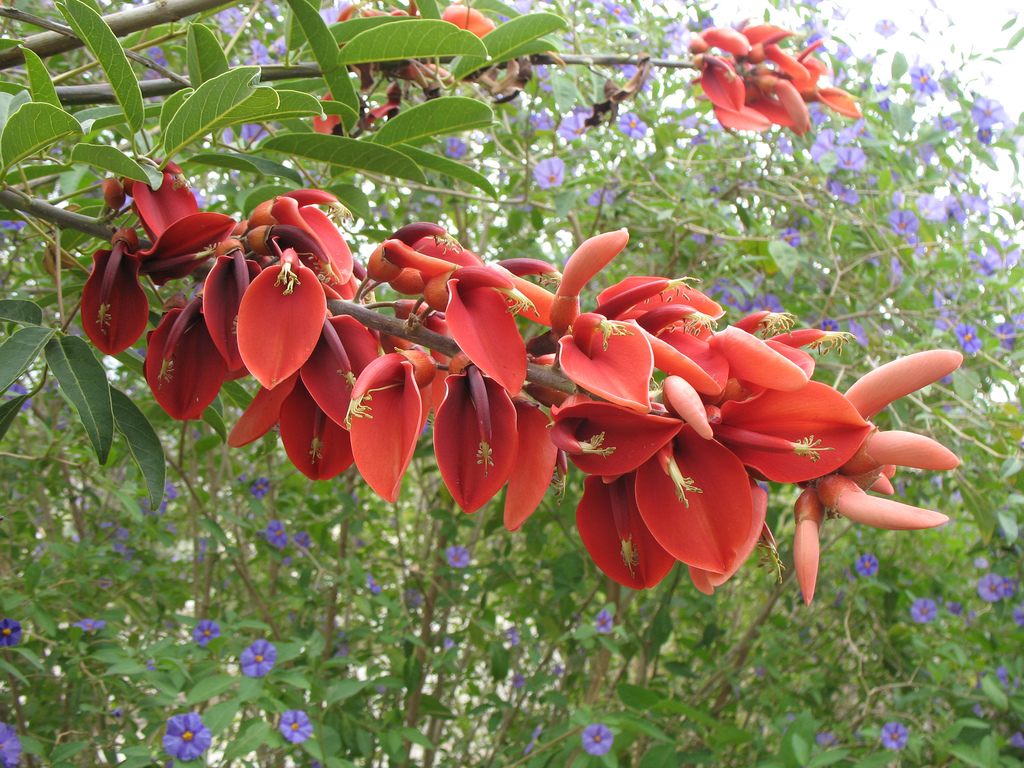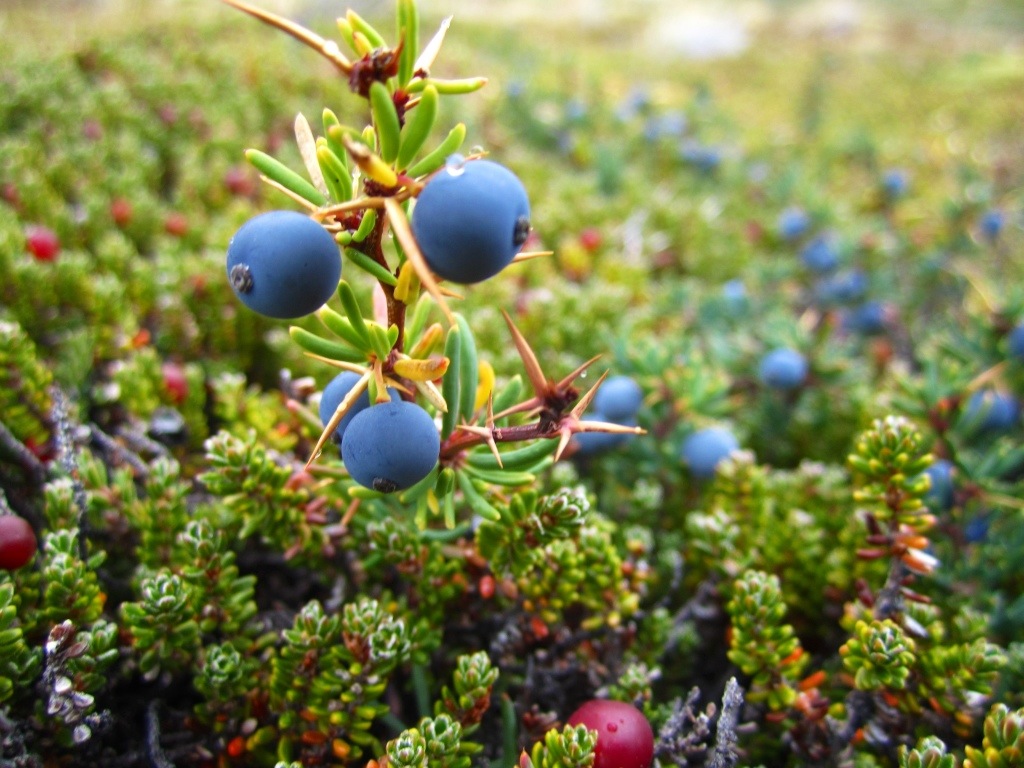The Vuriloche peoples have it that to give another an amancay flower is to offer them your heart. This belief comes from a very old legend; read on.
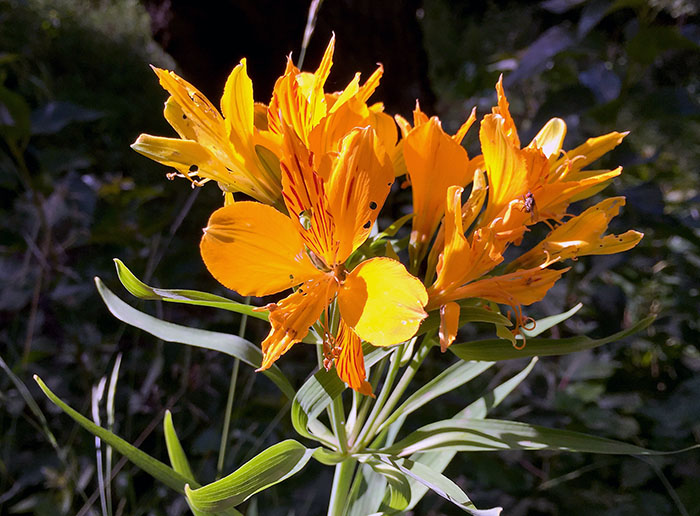
Amancay (Alstroemeria aurea)
In time long gone by a Vuriloche clan lived near a place called Ten-Ten Mahuida. On maps today you will find it as Thunder Mountain.
The chief of this clan had a young son called Quintral. He was strong, brave and good-looking, and there was no girl in the valley, nor in the neighbouring valleys, who didn’t sigh when he pased, or tremble at the sound of his voice.
Quintral could have had any girl in the region to be his, but although no one else knew, he was desperately in love with a poor girl named Amancay, though he kept quiet about this as he feared that his father would never let him marry a girl from such a humble family.
What young Quintral never imagined in his wildest dreams was that Amancay was also hopelessly in love with him, but she had never said a word to anyone because she thought a future chief like Quintral could never love a humble girl like her.
This undeclared love was one day to be put to the test. A violent fever broke out in the valley, and soon half of the clan was dead or dying. Many of those who had escaped the deadly disease had deserted the village in fear of their lives.
Quintral was one of the first to fall to the fever. In his delirium he began to babble, and his father, who was sitting with him, heard him mumble again and again the name ‘Amancay, Amancay, Amancay …’.
The chief made some enquiries and didn’t take long to find out who the ‘Amancay’ was, and to discover the secret love his son felt for her. Thinking that the sight of Amancay might brighten his son’s spirits he ordered his men to bring her to him immediately at his son’s death bed.
But Amancay was nowhere to be found. On the advice of the village medicine woman, she had struggled painfully up into the heights of Mount Thunder. The medicine woman had told her that the only way to combat the fever –and save Quiltran– was to make a potion from a yellow flower that could only be found at the very top of the mountain.
With knees grazed and hands bleeding, Amancay finally reached the mountaintop. In front of her she saw the yellow flower, its petals reflecting the yellow of the sun. She reached out to pick the flower, but barely was it in her hand when she heard a mighty roar of wind and her world went dark.
Raising her eyes she saw a huge condor standing before her. Each thrash of its wings raised a terrible wind as she cowered against the rock face.
Finally the bird spoke and in a voice of thunder announced that he was charged by the gods to protect the mountain and that she was taking away something that belonged to them.
Trembling with fear, Amancay told the condor through her tears how the people in the valley were dying, especially Quintral whom she loved, and that the flower was her only hope.
The condor told her if she wanted Quintral to be cured from his fever she would have to agree to give up her own heart. Amancay could not imagine living in a world where Quintral did not exist, and if she had to give up her life in return for his; well, she did not care about her own life without him.
She tore open her bodice and shift and offered her breast to the Condor. in an instant the bird ripped out her heart with his strong beak. As her life ebbed, the last words Amancay were to pronounce were the repeated name ‘Quintral, Quintral, Quintral …’.
With Amancay’s heart gripped tightly in its claws and the yellow flower in its beak the condor rose, flying higher and higher on the hot air currents to where the gods live, to ask them to send a cure for the disease. And as the bird flew, drops of blood from Amancay’s heart fell like rain on the valleys and mountains.
In a moment, all the hills and valleys were covered with small yellow flowers, each one speckled with red stains. Every drop of Amancay’s blood had given birth to a small plant, the same plant that once grew only on the summit of Thunder Mountain, the plant we know today as the Amancay.
